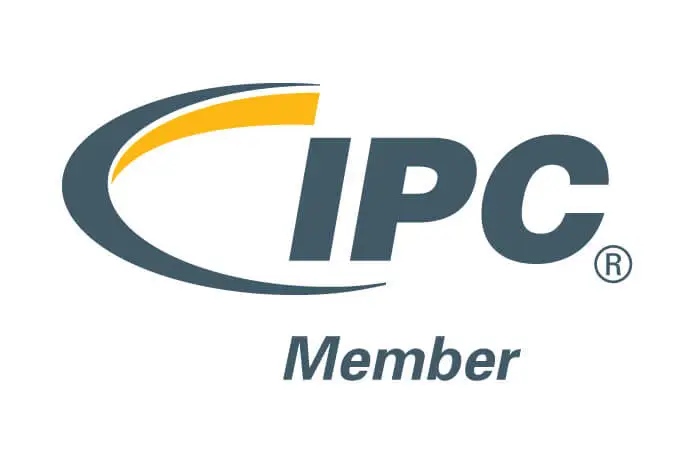TURN-KEY PCB ASSEMBLY: BITTELE ELECTRONICS
PCB MANUFACTURING AND ASSEMBLY
Full Turn-Key PCB Manufacturer
You can quickly get quotes and order PCB fabrication and assembly using our online system. Take advantage of exclusive automatic discounts with our tool. Our BOM pricing tool ensures you receive the lowest price for your order.
START A TURN-KEY PCB ORDER
PCB Delamination Principles, Causes, and Mitigation Strategies
In the field of electronic design, the printed circuit board (PCB) is a critical piece serve as the “neural network” of electronic devices by interconnecting components and enabling signal transmission. However, PCB delamination remains a hidden threat often likened to a “ticking time bomb” that can result in critical failures if not properly managed.
I. Fundamentals of PCB Stackup
To understand delamination, it’s essential to grasp the basic structure of a multilayer PCB. As described in PCB Design and Fabrication, a multilayer PCB is built by stacking alternating layers of inner circuitry, prepreg (pre-impregnated resin material), and copper foil, which are bonded together through a lamination process. The inner layers carry signal traces for transmission. Prepreg acts as both an insulating and bonding materials. While copper foil serves as the conductive layer for current flow and component interconnection.
During hot-press lamination, the resin in the prepreg melts, filling the gaps between inner circuitry and copper foils to form strong interlayer bonds. Any disruption in this bonding process can result in delamination, where layers partially or fully separate.
II. Common Causes of PCB Delamination
- Material-Related Factors
According to Fundamentals of Electronic Circuits, the quality of prepreg is critical. Issues such as uneven resin content, defective fiberglass weave, or inadequate thermal or adhesive properties can prevent proper resin flow and bonding during lamination, leading to delamination.
Additionally, poor surface treatment of copper foil such as oxidation or non-compliant roughness can weaken adhesion between the foil and prepreg. - Process-Related Factors
The lamination process plays a critical stage in PCB manufacturing. As explained in PCB Manufacturing Processes, improper control on key parameters such as temperature, pressure, and time during lamination can compromise bond integrity. If the temperature is too high, the resin may flow excessively or even decompose, reducing the bonding strength. If the temperature is too low, the resin cannot be fully melted and cannot form a good bond.
Insufficient pressure will cause inadequate resin filling, resulting in loose bonding between layers while excessive pressure may damage the inner layer circuit. At the same time, if the lamination process time is too short and the resin is not completely cured, it will also increase the risk of delamination. - Environmental Factors
Reliability Design of Electronic Equipment notes that environmental conditions also affect delamination. It indicates that high temperature and humidity during operation accelerate resin aging and hydrolysis, reduce the bond strength between layers.
For example, industrial environments with heat and moisture expose PCBs to long-term stress, increasing the risk of delamination. Mechanical shocks and vibrations can also introduce interlayer stress, triggering delamination over time.
III. Risks of PCB Delamination
- Signal Integrity Issues
Delamination compromises insulation between layers, leading to signal interference. According to the High-Speed PCB Design Guidelines, this can cause signal reflection, crosstalk, and impedance mismatch, which degrade signal integrity and stability. In highspeed digital circuits, this may result in data errors, performance loss, or system failure. - Electrical Performance Degradation
Delamination may reduce insulation resistance and increase leakage current, leading to circuit malfunction, short circuits, or even fire hazards. This is particularly critical in applications like medical or aerospace systems, where electrical reliability is critical. - Mechanical Strength Reduction
Weakened interlayer bonding compromises the PCB's mechanical integrity. Under physical stress such as vibration and bending, delaminated boards are more prone to warping, cracking, or breakage, reducing product durability and reliability.
IV. Detection and Prevention of PCB Delamination
- Detection Methods
As described in PCB Quality Inspection and Control outlines several techniques. X-ray inspection is a non-destructive method that visualizes internal bonding and identifies voids or delamination.
Cross-section analysis involves cutting, polishing, and staining PCB samples for microscopic examination that provides highly accurate results but destroys some sample. - Prevention Strategies
Material selection like choosing the proper prepreg and copper foil that meet design specifications and industry standards. Prioritize suppliers with strong quality control and stable performance.
Process optimization to control lamination parameters such as temperature, pressure, time based on PCB structure and material properties. Maintain lamination equipment regularly to ensure accuracy and consistent performance.
Environmental control to maintain controlled temperature and humidity during manufacturing and operation. For sensitive applications, implement moisture barriers, sealing and environmental enclosures to protect PCBs from degradation.
Conclusion
While PCB delamination is a complex issue, understanding its underlying principles, causes, and impacts enables effective mitigation. By combining robust materials, optimized processes, strict quality control, and appropriate environmental protection, manufacturers can significantly reduce delamination risks, improving the long-term reliability and performance of PCB assemblies.
Bittele Electronics can be reached over email at sales@7pcb.com, or toll-free over the phone at 1-416-800-7540 for any concerns or questions with regard to your upcoming project, or to provide your PCB Design Files for an official quotation.
Related Articles:
Please briefly describe the information you are seeking in the search bar below.






 English
English